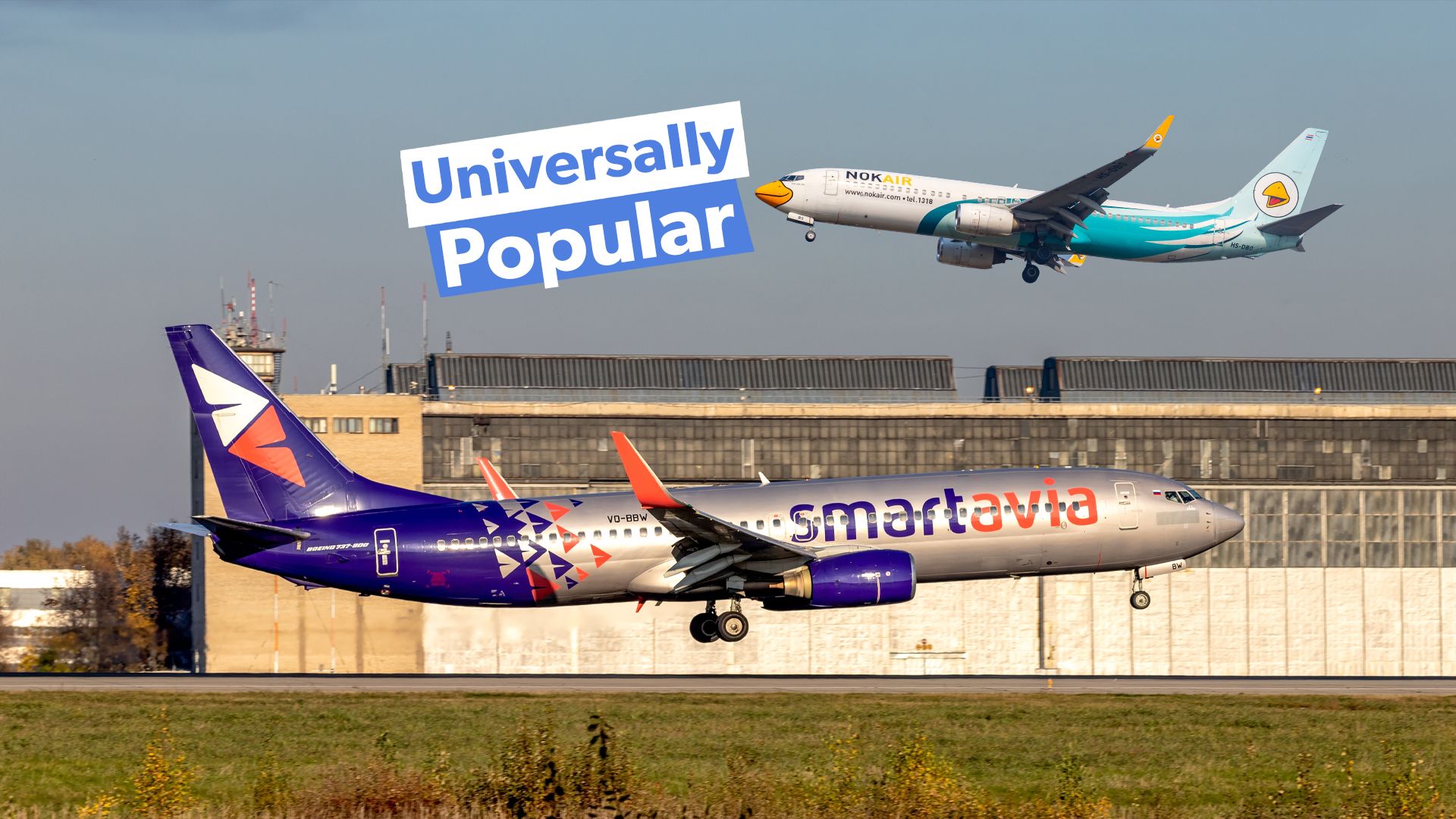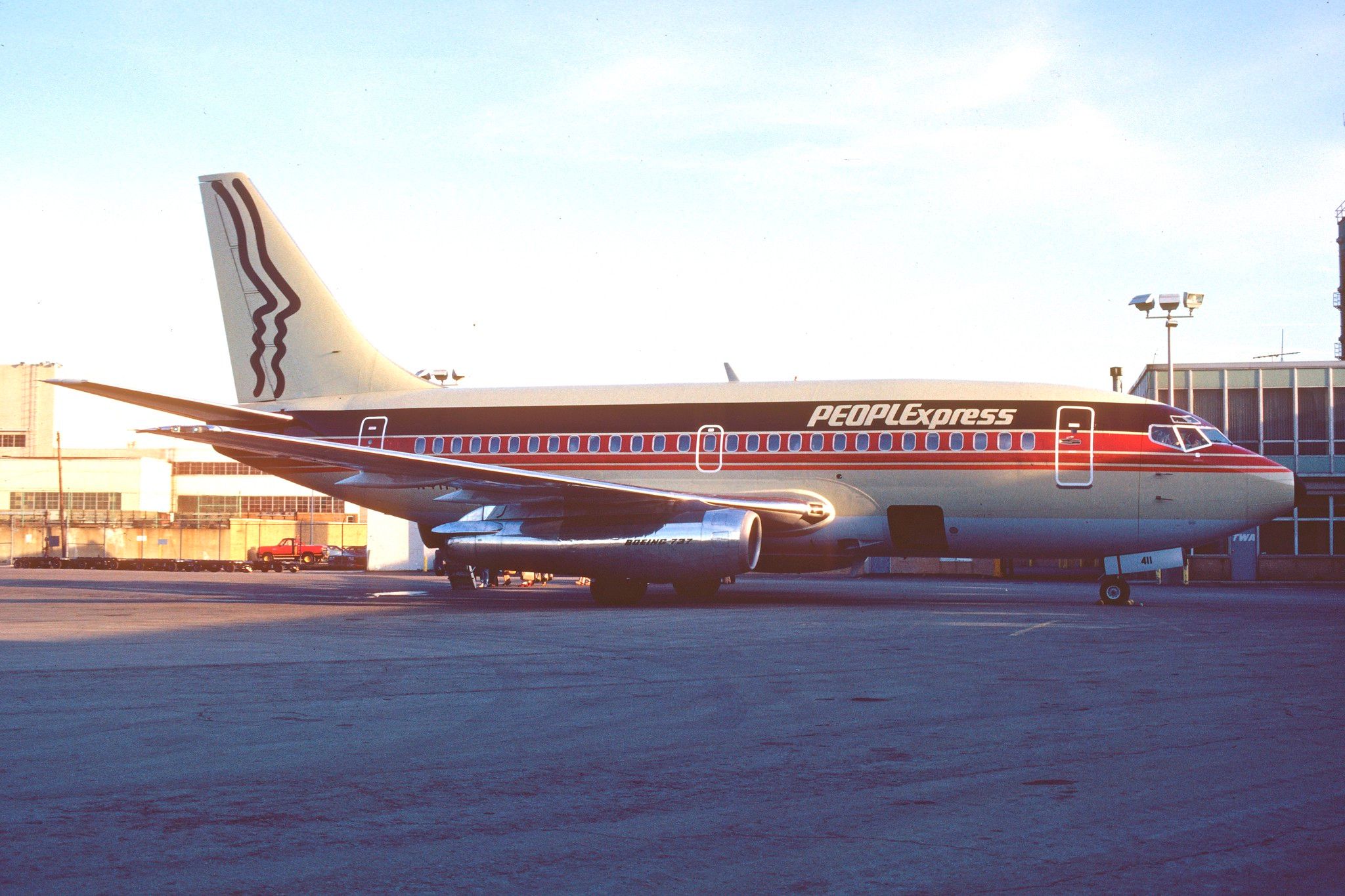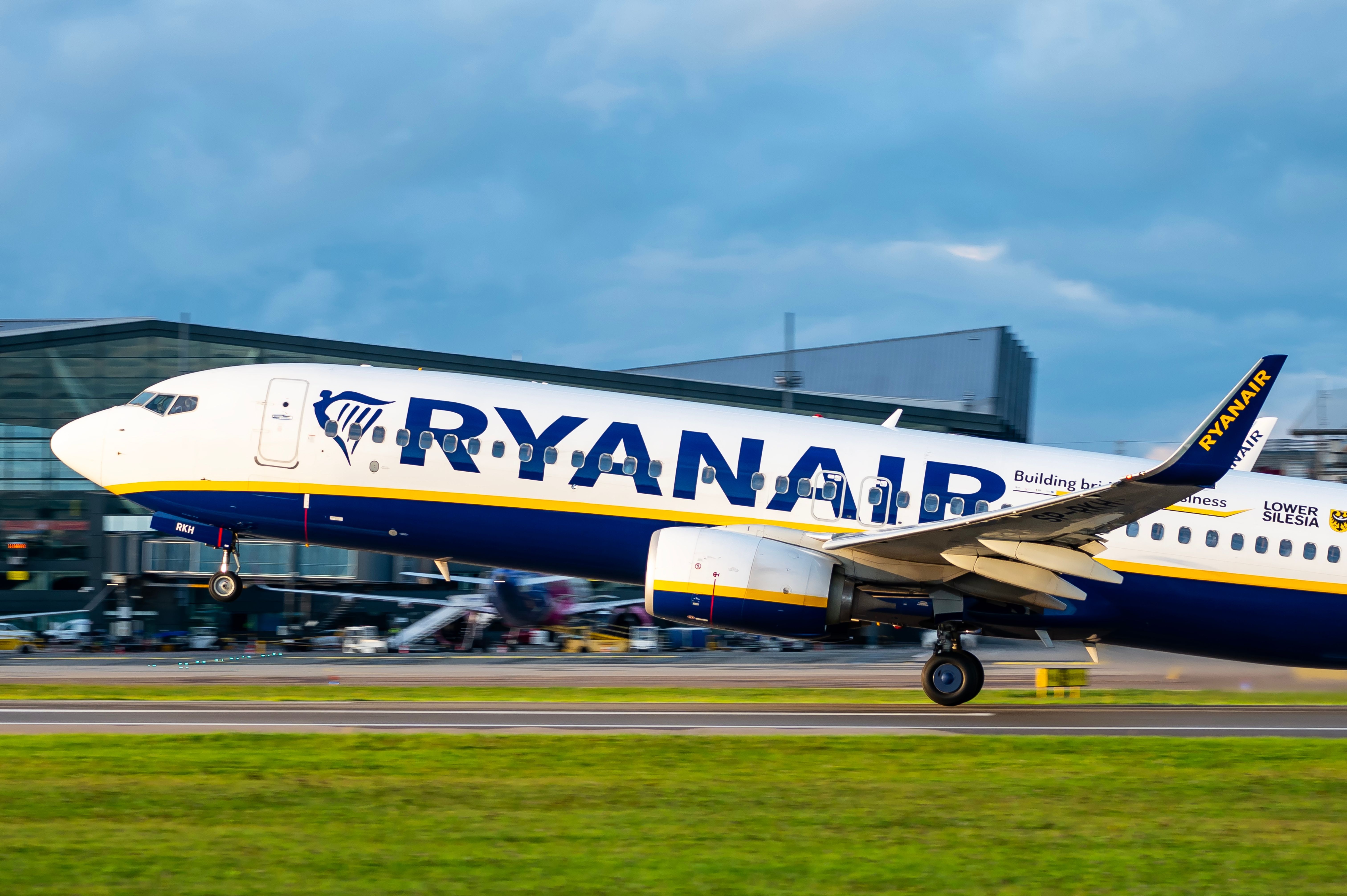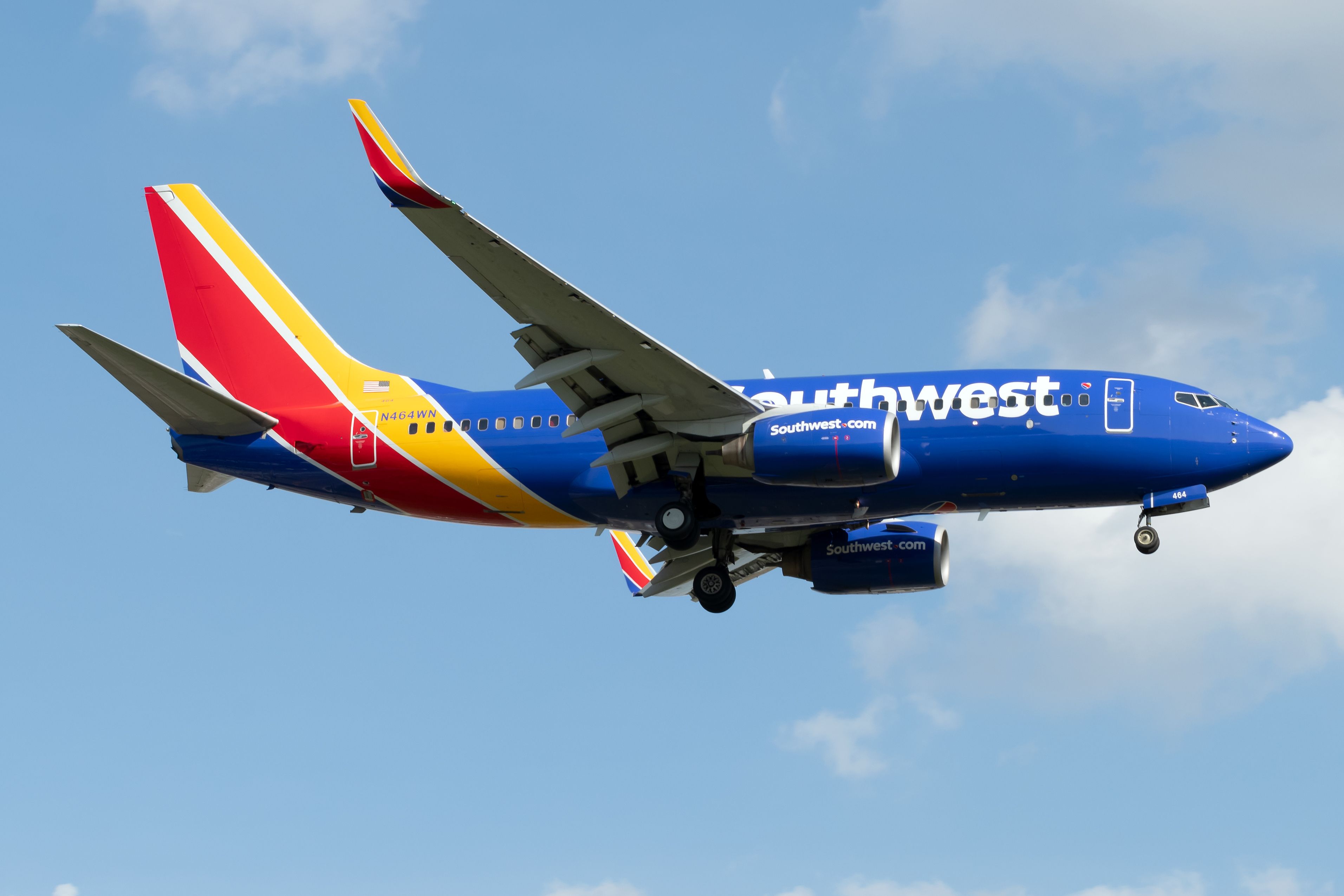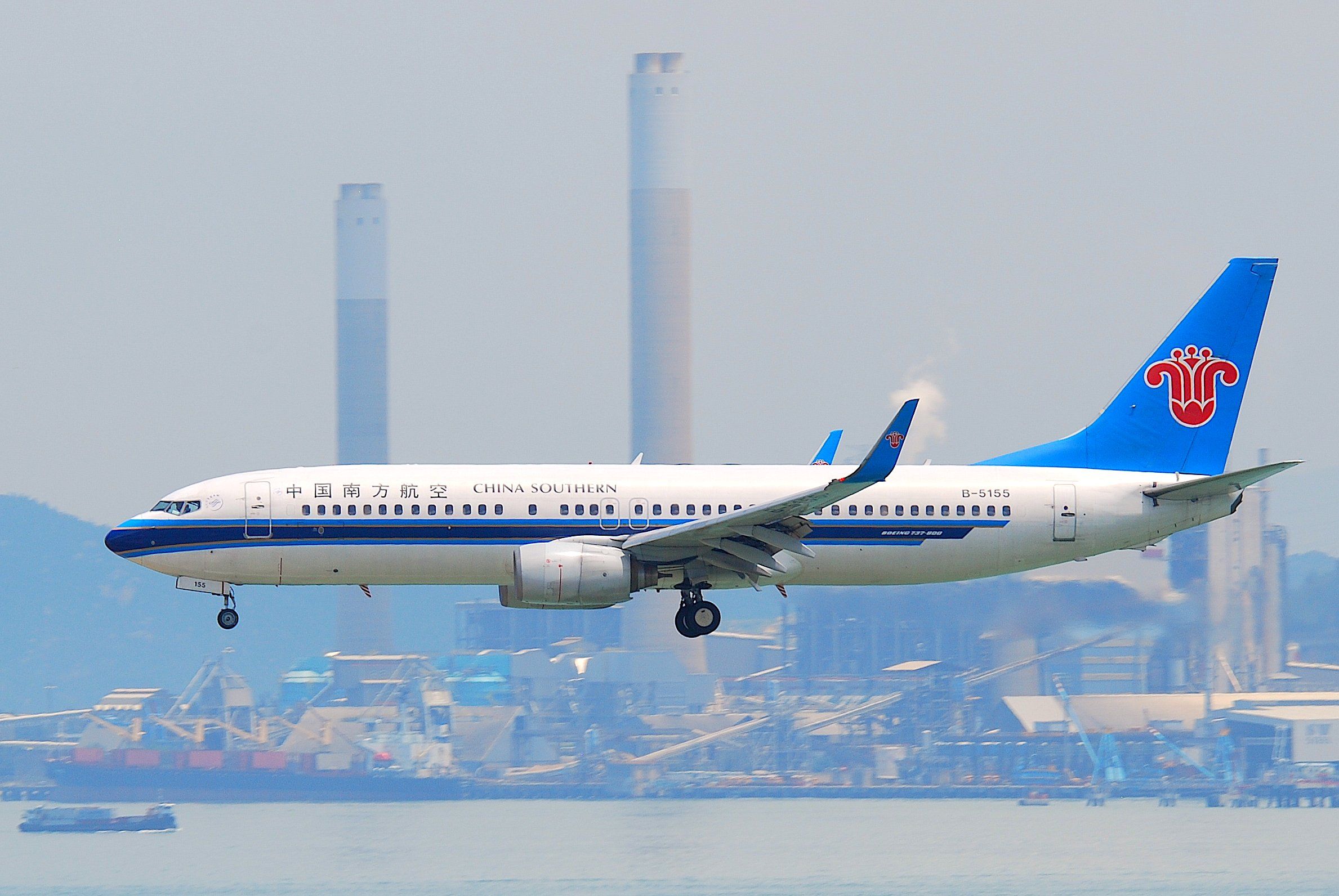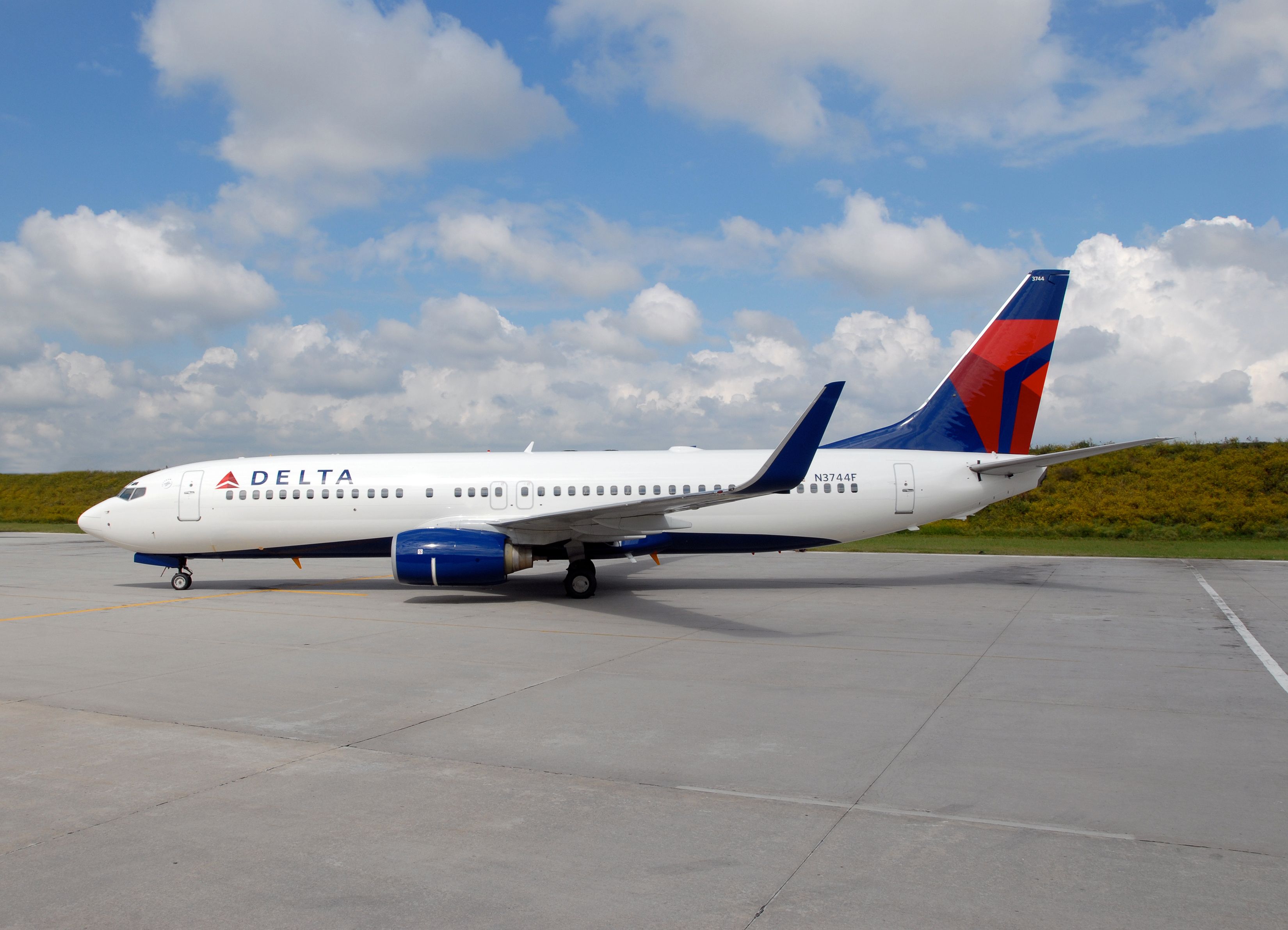Not only is the Boeing 737 the highest-selling Boeing aircraft family, it is the highest-selling of any commercial passenger jet series in history. It’s been through a number of iterations since the original 737-100 entered into commercial service back in 1968. The most popular of all the iterations of the Boeing 737 is the Boeing 737-800. Below we’ll run through the reasons behind the 737-800’s unrivalled success.
737-800 beginnings
![]() Boeing
Boeing
began the story of its most popular aircraft series with the release of the Boeing 737-100 more than 50 years ago. Upgrades and improvements to the successive Boeing 737 types throughout the years have been extensive, but the basic platform of the Boeing 737 – a narrowbody, short-to-medium range twin-engine jet – has remained consistent.
The various types of Boeing 737s produced throughout the years can be separated into four main generations – the 737 Original, 737 Classic, 737 Next Generation (NG), and the 737 MAX. Each of these generations consists of different types which, while different, are linked by mutual design features and components. Out of all the separate types, the Boeing 737-800 stands out head and shoulders above the rest in terms of units delivered at a whopping 4,989.
The 737-800 is part of the 737 Next Generation designation. Introduced in 1997 with the 737-700, the series is the best-selling in the 737 program’s history, in large part due to the success of the 737-800:
|
Variant |
Entry into Service |
Deliveries |
|---|---|---|
|
737-600 |
1998 |
69 |
|
737-700 |
1997 |
1,128 |
|
737-800 |
1998 |
4,989 |
|
737-900 |
2001 |
52 |
|
737-900ER |
2007 |
505 |
Why so popular?
A confluence of factors has led to the 737-800 becoming the best-selling aircraft variant ever. While the Boeing 737 series comes in second to the Airbus A320 family in terms of overall deliveries, the 737-800’s 4,982 deliveries edges out the A320-200 (4,752 deliveries) to the top spot for singular variants.
Balance of capacity and range
Airlines found that the 737-800s capacity – seating 162 in a two-class config or 189 in all-economy – and range hit a sweet spot for their short-to-medium haul networks. Marking a sizable increase in capacity from the -700 (126 in two-class or 149 all-economy), the -800 also had exceptional network versatility with a maximum range exceeding 3,000NM.
Market demands
The 737-800 arrived at a time when commercial aviation was continuing to grow rapidly. In particular, the low-cost carrier model began to really establish itself globally just as the 737-800 was entering the market, making it one of the go-to aircraft for emerging low-cost giants, such as Ryanair. The plane would also be an excellent addition for full-service carriers, giving them an efficient regional workhorse.
Photo: Tomasz Warszewski | Shutterstock
Fuel efficiency
The 737-800 was powered by the CFM56 engine, which delivered significant performance and efficiency upgrades over previous 737 models. The engine – which has gone on to become the best-selling commercial aircraft engine of all time – was also noted for its reliability, leading to higher time-on-wing.
737-800 in comparison to other 737NG’s
Boeing 737NG aircraft offered significant internal upgrades and greater fuel efficiency than the classic generation aircraft before them. These features made the Boeing 737-600, -700, -800 and -900/-900ER immediately popular with airlines, as associated running costs were cheaper.
Photo: Vincenzo Pace | Simple Flying
Each of the four types within the Next Generation family was built to fly with a specific passenger capacity and range limits. The second most popular type in the NG series is the 737-700 with 1,128 deliveries. This aircraft was an efficient workhorse on shorter routes, but generally lacked the range and capacity to prove feasible on longer routes.
Notable 737-800 operators
Despite being released over a quarter of a century ago, the 737-800 remains an integral part of many airline fleets, even with the MAX available. While major carriers are taking on board the newer MAX, they still maintain significant 737NG operations.
- Ryanair: The Irish low-cost giant currently operates a fleet of 410 737-800s, as well as over 120 airframes that have been retired.
- American Airlines: The Fort Worth-based carrier maintains an active fleet of 303 737-800s.
- Southwest Airlines: Southwest has 205 737-800s, but its inventory of 737-700 (364 planes) and 737 MAX (241 planes) is larger.
- China Southern: The Chinese carrier is the largest Asian operator with over 150 active 737-800s and 20 retired airframes.
- United Airlines: The airline has over 140 737-800s and is also a major operator of the 737-900ER (136 aircraft) and the 737 MAX (187 planes).
Compromise is a recipe for success
As the basic stats for the various Boeing 737 Next Generation types show, the Boeing 737-800 sits in the middle of the pack – it doesn’t have the highest passenger capacity and it doesn’t have the longest range, but provides an ideal combination of both.
Photo: Delta Air Lines
That’s what has made it so popular – the Boeing 737-800 does the important things well. In a market where there are other specialist larger and smaller aircraft available, the Boeing 737’s versatility ultimately proved a deciding factor in its popularity. If airlines want to carry as many passengers as possible, or have the maximum possible range, there are aircraft out there which are specifically designed to do just that, but the 737-800 offered a good measure of both worlds.

